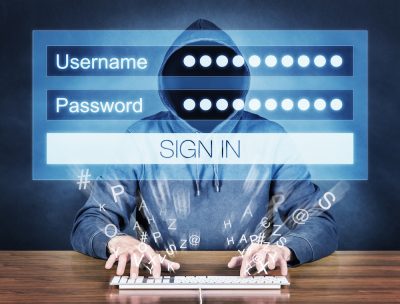Three steps to safer browsing online
By Davis Merrey

Back in the 1930s, there was a bank robber by the name of Willie Sutton. When they finally captured him, they asked him why he robbed banks. His answer? “Because that’s where the money is.”
The same is true for websites online. Which sites do hackers target first? The ones where the people are. That means social media (especially Facebook), popular e-commerce websites, and popular online email providers are all at risk for hacking.
If you’re not careful (and sometimes even if you are), Facebook is probably one of the most dangerous websites you can be on in terms of risk of being hacked. You may be thinking there’s not much someone could steal from you on Facebook, but there is. They can steal your login email and password, for one. They can steal personal information about you from your profile and use your profile to access your list of contacts and any information posted about them.
So how do you keep yourself safe when browsing online?
Be careful what you click
Whether it’s that recipe for a decadent chocolate cake or that cute cat video, links you click online can be malware in disguise. You click on that cute video or popular recipe, and all of a sudden, hackers may have access to your account.
We’re not suggesting you stop using Facebook entirely, but rather be careful what you click, whether it’s on social media, when browsing online, or in your email inbox. Hackers are lurking and waiting for you to click something that gives them an entry point to your account.
Don’t use the same login ID and password on multiple sites
Many people use the same email address and password to log in to multiple sites across the internet. So if a hacker steals your Facebook login information, they’re likely going to try that same combination to log in to common bank websites and other places that might store your financial information.
To avoid that risk, be sure to use unique passwords for every different site. Also, you don’t have to use your full email address as a username on every site. Some sites will require an email as a login ID, but others allow you to choose any username.
If you have the option, create unique usernames and passwords for different sites. Or consider creating a few different email accounts (such as through Gmail) to use for sites that require an email address. Not sure how to manage all those passwords? That’s where a password manager comes in handy.
Educate others about the risks, especially your employees
Small businesses have an even higher risk of being targeted by hackers, because they know that there’s plenty of data available if they can breach your system. That’s why it’s important to educate your employees and regularly discuss internet safety and the importance of secure passwords.
If you’re doing anything online, you’re at risk for getting hacked. But by thinking about where you browse and what you click, plus using unique login IDs and passwords, you can substantially reduce that risk.
